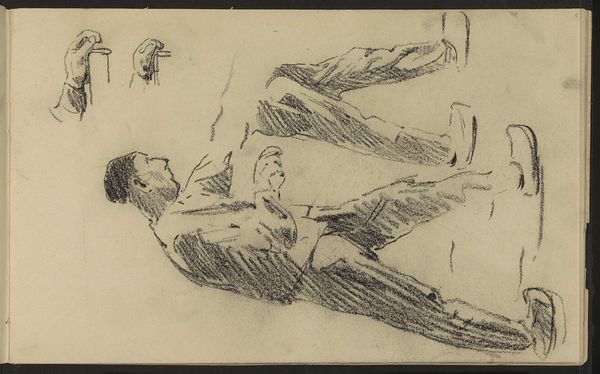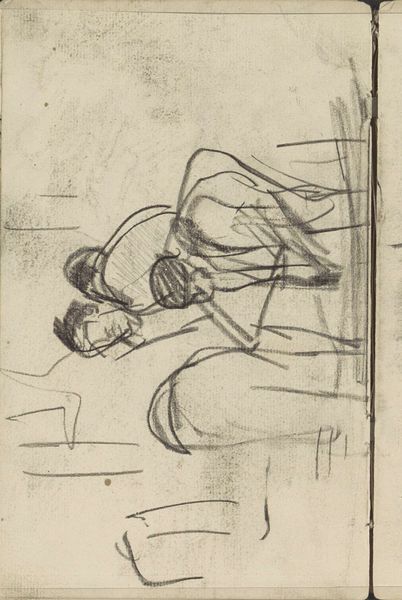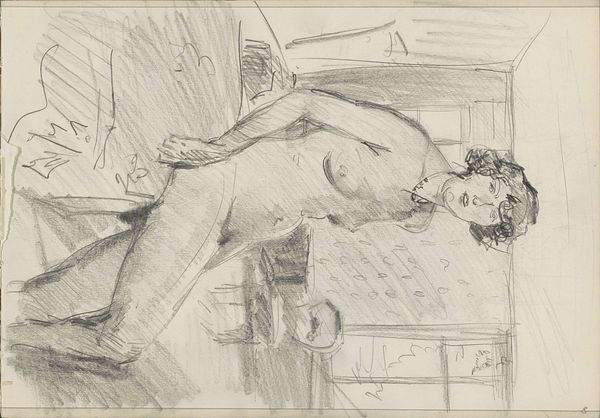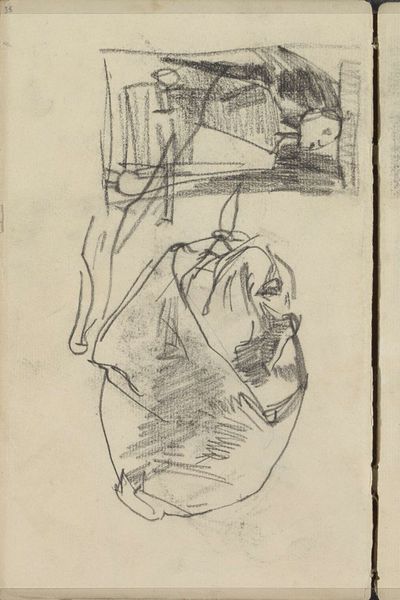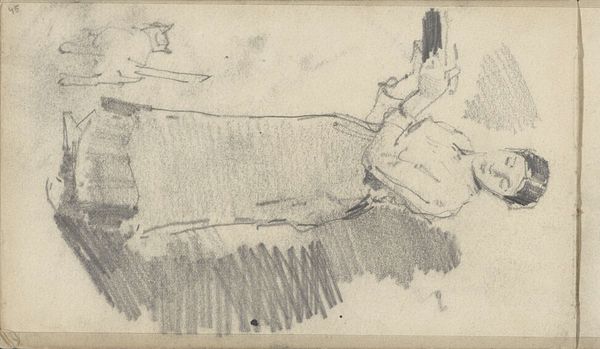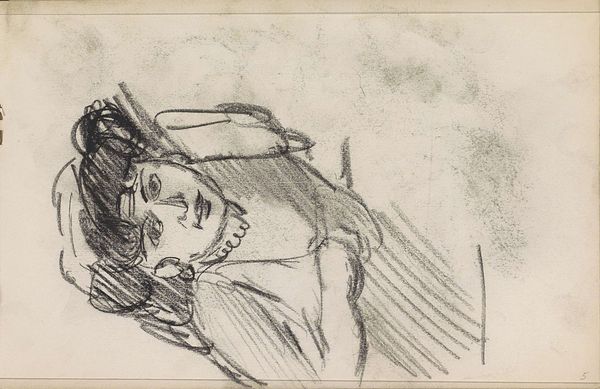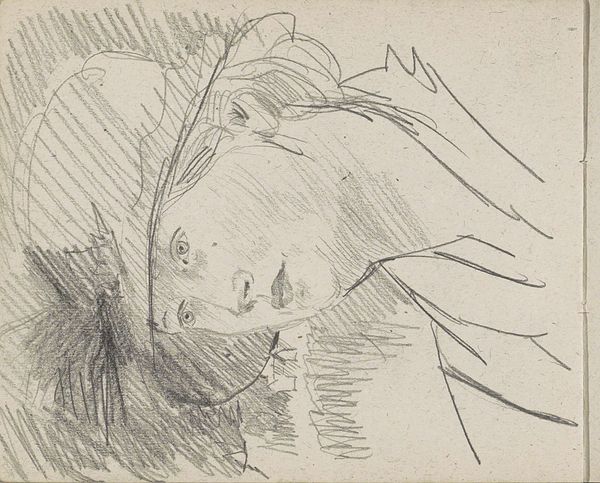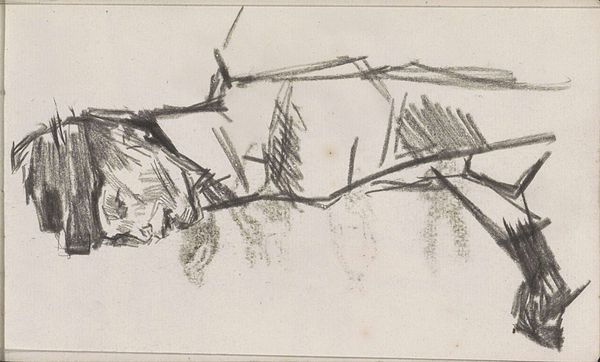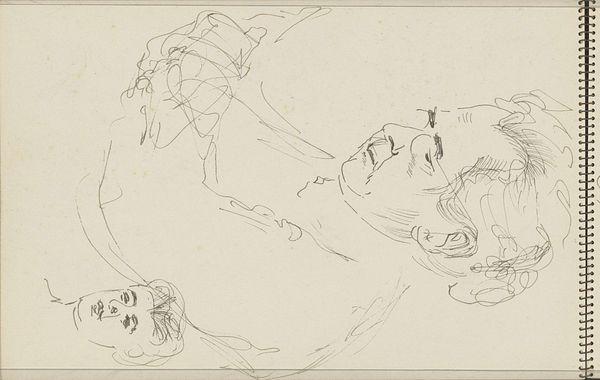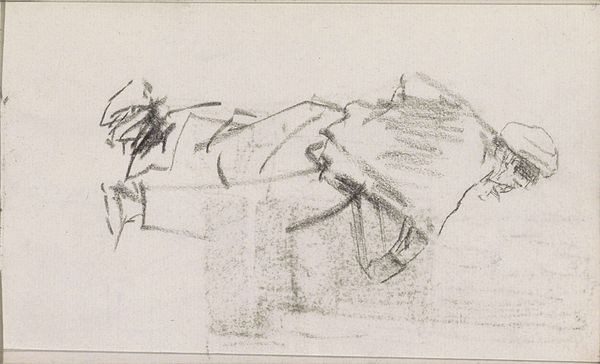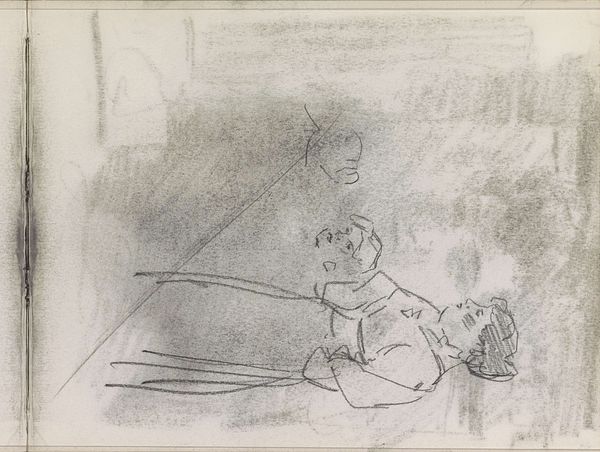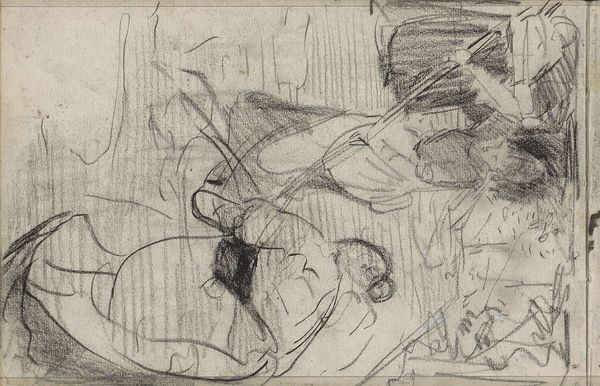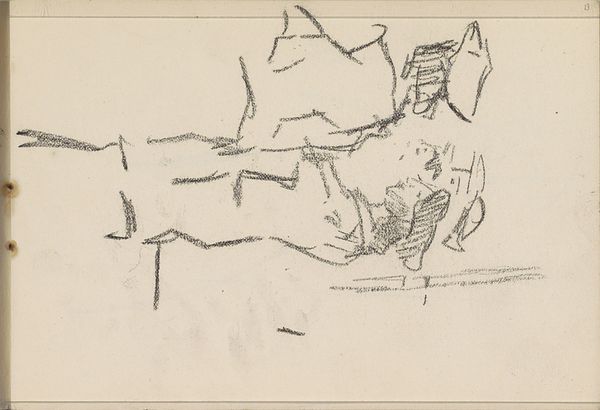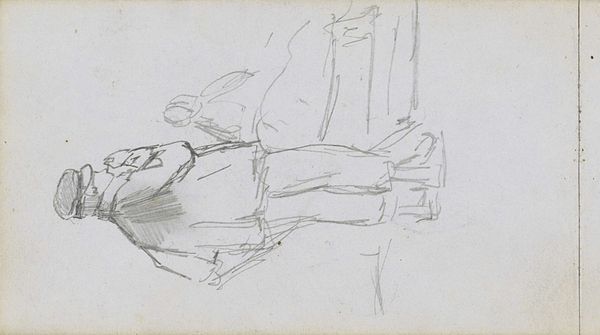
Copyright: Rijks Museum: Open Domain
Editor: So, here we have George Hendrik Breitner's "Zittende vrouw" from between 1893 and 1899, held at the Rijksmuseum. It's a pencil and ink drawing, very raw and sketch-like. The woman looks almost uncomfortable, caught in a moment. What stands out to you in terms of how Breitner crafted this piece? Curator: I see a fascinating tension between intention and execution. This looks like a rapid study, probably done in situ. Think about the material constraints: the paper, the pencil or pen, and the artist's hand. The resulting marks aren't just lines; they're records of a physical act, a dialogue between the artist, his tools, and his subject within a particular setting, capturing not just her image but also a moment in Breitner's life. How does the spontaneity of the sketch challenge notions of high art versus mere 'craft' or study? Editor: That's a great point. It feels very immediate. Do you think this was intended for public display, or more of a private exploration of form? Curator: Knowing Breitner's interest in capturing the fleeting realities of city life, I see this less as a polished portrait and more as a study of everyday life of women workers. This may reflect his engagement with societal dynamics that Impressionism aimed to document in its exploration of light and everyday life. Was Breitner trying to quickly document the appearance and situation of workers? Editor: That context shifts my perception. I was focused on the figure itself. Curator: Exactly! Think about it: cheap materials, quick execution. These were the realities of making art accessible, potentially reflecting an effort to democratize image-making. Are these sketches part of the industrial world, or reaction to it? Editor: I've never thought about a sketchbook quite this way – more than just capturing likeness, but capturing social realities. Thanks! Curator: And I, that such apparent inconsequential things as pencil or pen marks can bear significance far beyond their basic materiality.
Comments
No comments
Be the first to comment and join the conversation on the ultimate creative platform.
